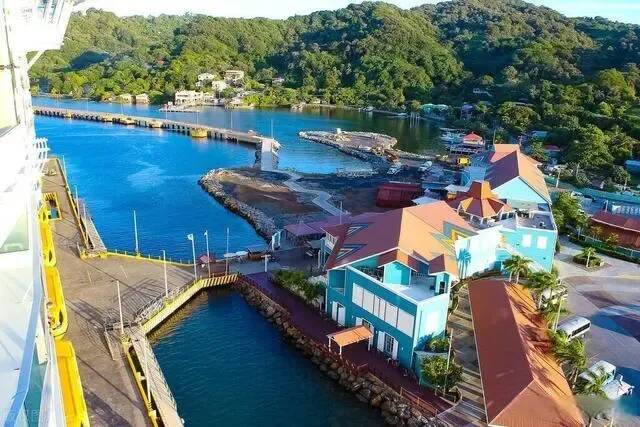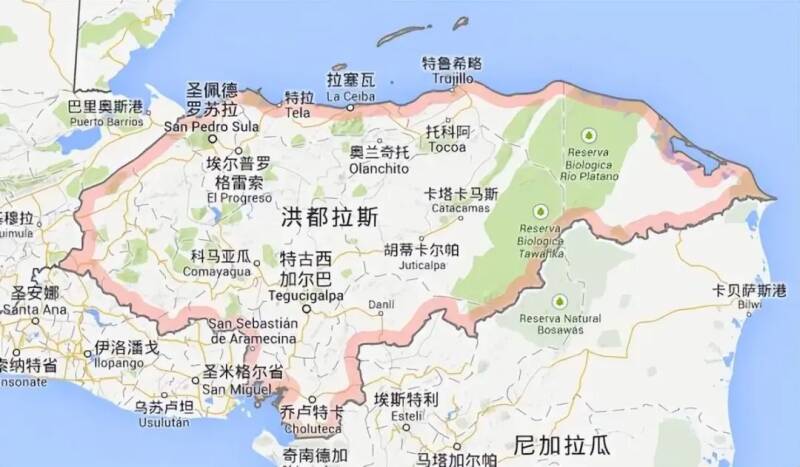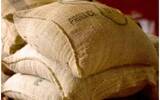Honduras| Introduction to the coffee producing area Mondesius Estate
In Central America, many countries grow coffee, such as Panama, Costa Rica, Honduras and so on. Among them, Honduras has become the second largest coffee exporter in Central America and the tenth largest coffee exporter in the world, with high output and high quality at the same time.

According to historical records, as early as the late 18th century, coffee was first introduced to Honduras by Spanish businessmen and planted on a small scale, but because coffee was a long-term investment, many farmers could not wait so long to grow crops such as bananas. until the mid-20th century, roads and stable infrastructure across Honduras made it easier for crops to be exported, and banana production began to decline. Coffee beans have gradually emerged to replace bananas, and later, with the continuous improvement of coffee processing technology and transport capacity, it has become one of the top ten coffee exporters in the world.
Located in the north of Central America, Honduras is a land, sea and preparation country, bordering the Caribbean Sea to the north and the Gulf of Fonseca in the Pacific Ocean to the south. More than 3/4 of the country's territory consists of mountains and plateaus, with mountains extending from west to east and plateaus inland.

Honduras has a tropical climate, coastal areas have a tropical rain forest climate, with an average annual temperature of 23 ℃, abundant rainfall, and forests account for half of the country's area, with many volcanoes and mountains, diverse climate, mild temperature and adequate rainfall. These conditions make the country very suitable for growing crops such as coffee.
In 1970, the Honduran Coffee Institute (IHCAFE) was established by the Honduran government to help local coffee farmers improve their techniques and quality, and was divided into six producing areas: copan, opalaca, montecilos, Gongma Agua conayagua, Akata agalta tropical and Paraso el paraiso, averaging more than 1100 meters above sea level.
These producing areas are mainly concentrated in the south-central and western parts of the country, most of which are mountainous, savanna and jungle areas, and the lower areas have the Rhine and Kotnica valleys, which are rich in water resources. it is a major area for agricultural and industrial development in Honduras.
Montesius (Montecilos): located between La Paz in La Paz, Comayagua in Comouagua, Santa B á rbara in Santa Barbara and Intibuc á in Intibuka, it is full of fruity and sweet aromas with lemon and floral flavours. Lemon and fruit aromas are important features, especially peaches and oranges, with lively and bright acidity, velvety texture and a lingering finish. 1200-1700 meters above sea level, annual rainfall of 1300-2300 mm, production season from December to April of the following year.
Intibuc á, Neyntibuka province, is the most mountainous region in Honduras, its highlands and valleys are the highest in the country, and the Cordillera Mountains are nearly 3000 meters above sea level and have many rivers, so Intibuka is famous for its agricultural products and handicrafts such as coffee and corn, and coffee farms in the region get good results on the COE of Honduras.
At this year's COE in Honduras, Los Pinos Manor from Intibuka province won third place with 90.71 points of washing rose summer, and this is the first time the estate has participated in COE.
It is understood that the estate is located near La Esperanza (La Esperanza), the capital of Intibuc á in Intibuka province, on a hillside 1770 meters above sea level. The owner of the estate is Joaquina Montoya Alvarado, a coffee producer who has been working for 35 years and now runs the estate with her husband.
Los Pinos Manor did not participate in COE until once, Joaquina's friend Ronny Gamez came to visit the estate and thought that the coffee quality of the estate was up to COE standards, so he encouraged Joaquina to participate in the COE competition and finally won the third place this year. And Joaquina said that as a result of this achievement, more money, time and energy will be invested in farm development in the future.
Important Notice :
前街咖啡 FrontStreet Coffee has moved to new addredd:
FrontStreet Coffee Address: 315,Donghua East Road,GuangZhou
Tel:020 38364473
- Prev

How to make iced coffee by hand? Can ice hand punch out the flavor of flowers and fruits?
Iced drink is something that is difficult to give up in summer no matter what, and hand-brewed coffee is no exception. In the eyes of most of us, the requirement for a good cup of ice cream is actually not high, just that it is cool enough without losing the coffee flavor it deserves. But if you want to make iced coffee have a sweet and sour taste like fruit juice,
- Next

Defeated by durian! Vietnam's coffee planting area declines
Earlier, Vietnam's Ministry of Agriculture and Rural Development issued an export report for the first half of 2024, which pointed out that coffee exports in the first six months of 2024 fell by 10.5%, with an export volume of 902,000 tons of coffee. However, due to the average export price of coffee increased by 50.4%, exports reached 3.22 billion US dollars.
Related
- What effect does Italian American coffee with filter paper have? Will coffee taste better if it is put on filter paper at the bottom of the powder bowl?
- What is the color difference in coffee beans? What are the characteristics of honey processed coffee beans? Why are the anaerobically treated coffee beans uneven in color?
- How does novice Xiaobai quickly get started and make coffee? Newbies learn to make coffee by hand and share the specific steps and process process!
- Costa tea has a shelf life of 100 years?! Expert: Unable to verify
- It's a huge uproar! American milk addition was rejected by Manner employees?!
- Mocha pot coffee bean recommendations| How fine and how much powder should be used for grinding? What parameter ratios do I need to use to make milk with Mocha pot coffee?
- What are the characteristics of the world's top ten coffee beans treated with Costa Rica honey? How to make black honey kadura from Tarazhu Pilon Processing Plant taste good?
- How to make deep-roasted coffee? What grinding water temperature does authentic Jamaica Blue Mountain No. 1 coffee use to brew it well?
- Selected high-grade rose summer coffee flavor tasting guide Why Panama rose summer has the aroma of flowers and fruits
- What equipment does a novice Xiaobai need to buy to learn to make coffee? Filter cup electronic scale bean grinder manual flushing pot purchase guide

